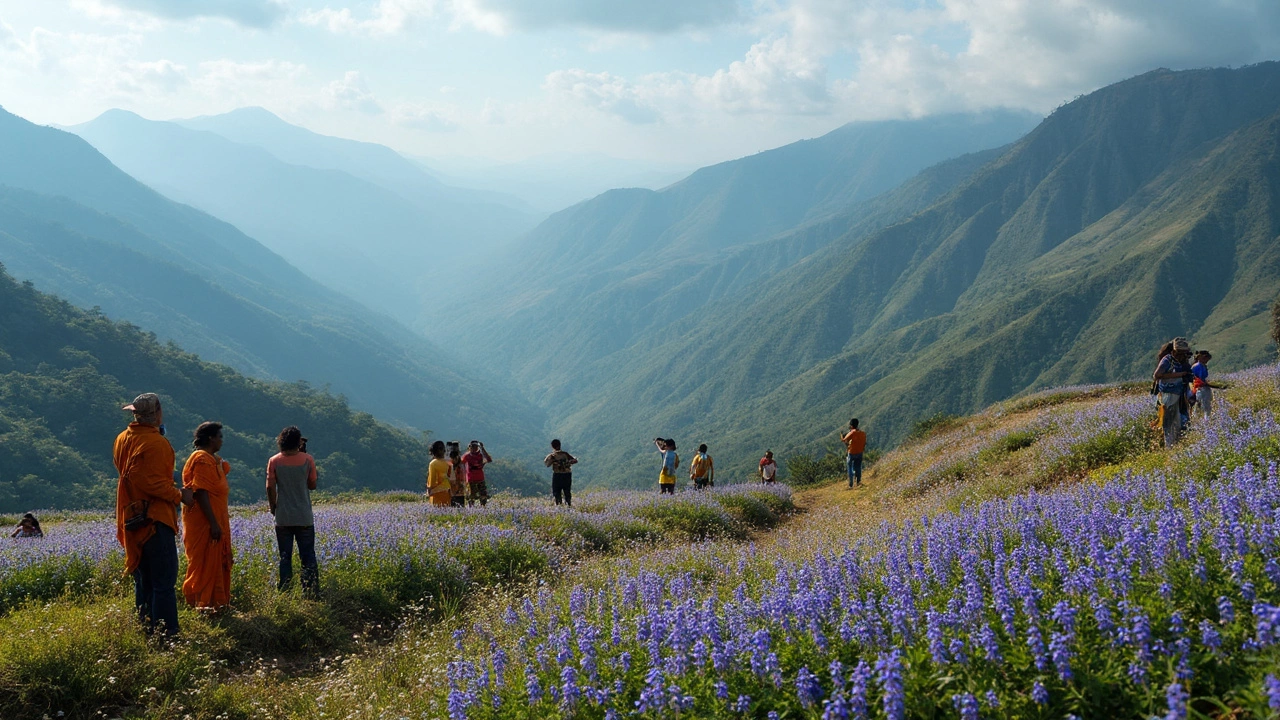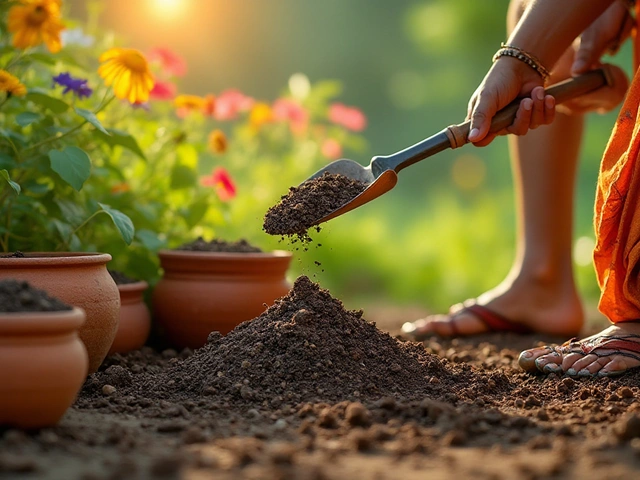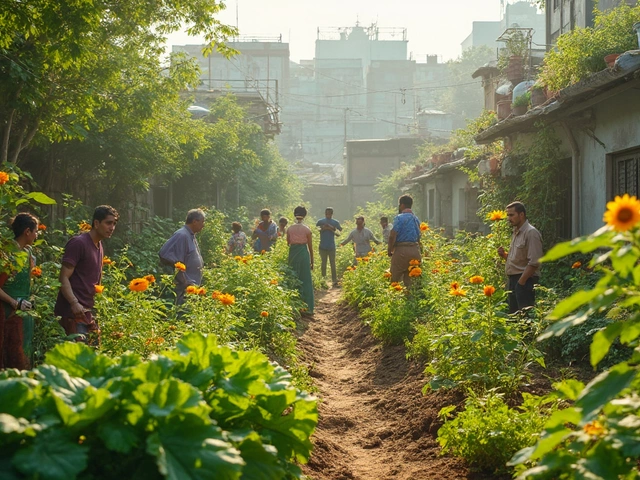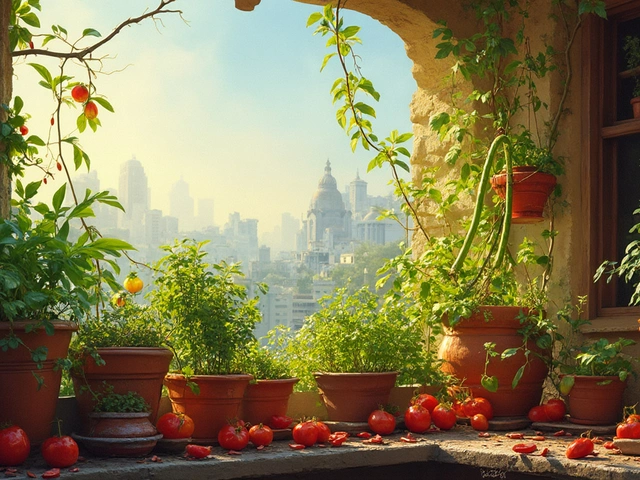If you’re on the lookout for rare flowers in India, one name jumps straight out—Neelakurinji. Most people will never see it in their lifetime, and that’s not even an exaggeration. This wildflower only blooms once every twelve years, turning hillsides in South India into a sea of blue and purple for just a few weeks. The effect is mind-blowing for anyone lucky enough to catch it.
People plan trips years in advance just for the chance to see Neelakurinji. Local hotels and homestays are packed when word gets out about the bloom. Gardeners and travelers swap stories in person and on WhatsApp groups about whether it's started yet. So, what’s the big deal with this plant—and why is it so hard to see?
- The Hunt for India’s Rarest Flower
- Neelakurinji: A Once-in-a-Generation Bloom
- Where and When to See Neelakurinji
- Why Is Neelakurinji So Rare?
- Can You Grow Neelakurinji in Your Garden?
The Hunt for India’s Rarest Flower
Tracking down the rarest flower in India isn’t a casual weekend project. The Neelakurinji, or Strobilanthes kunthiana, hides deep in the Western Ghats, mostly around the hill stations of Kerala and Tamil Nadu. It’s not just rare because it’s hard to find; it’s rare because its blooming cycle is flat-out stubborn—just once every twelve years.
Locals in Munnar, Kodaikanal, and nearby hills mark their calendars for over a decade waiting for this event. You might see the odd plant here or there, but you need perfect timing for the hills to light up blue. Guides and forest officials keep track and post updates as the season gets close since tourists pour in from all over when the word spreads. If you’re planning to spot Neelakurinji, you’ve got to rely on a mix of luck, careful timing, and watching trusted news sources or travel groups in the area.
The flower usually pops up at elevations between 1,600 and 2,400 meters, so you’ll find it in places like Eravikulam National Park in Kerala or parts of the Nilgiris. Most tour guides are ready for questions and can help you pick the best time based on the last recordings, rainfall, and even temperature changes. But even then, you might have to hike a bit and face some crowds—the phenomenon is that popular. For those outside South India, forget about stumbling across it in city parks or gardens—it’s just not going to happen.
So, getting a glimpse means planning ahead. Grab updates from the Kerala Tourism website, speak to local guides, and if possible, keep your dates flexible. Patience wins the day, as the bloom won’t wait for anyone. And don’t forget your camera; this is a once-in-a-generation sight, not your usual selfie spot.
Neelakurinji: A Once-in-a-Generation Bloom
This flower isn’t just rare—it’s practically a legend. Neelakurinji, also called Strobilanthes kunthiana in scientific circles, has a blooming cycle that puts it in a league of its own. Most plants come and go each year, but Neelakurinji goes completely off-grid for twelve years at a stretch. When it finally reappears, it transforms South India’s Western Ghats into a blanket of blue and purple that stretches as far as you can see.
The last major bloom happened in 2018, and folks are already counting down for 2030. Botanists have clocked this unusual cycle since the early 1800s. They’ve recorded that the Neelakurinji only flowers en masse every twelve years, and it covers the slopes mostly in Kerala, especially around Munnar and some parts of Tamil Nadu and Karnataka. It’s so famous that the Nilgiri mountains literally got their name from Neela (which means blue) and giri (which means mountain)—all because of this flower.
Here are a few quick facts about its unique blooming:
- Neelakurinji only blooms in synchrony once every twelve years across thousands of plants.
- Each plant actually dies after flowering and leaves seeds for the next generation, so what you see in one cycle won’t show up again.
- There are around 45 different types of kurinji plants, but Strobilanthes kunthiana is the most famous for this rare show.
If you’re curious about how rarely this bloom lets itself be seen, check out this quick table:
| Year of Major Bloom | Region | Bloom Duration |
|---|---|---|
| 2006 | Munnar, Kerala | August-October |
| 2018 | Munnar, Kerala | July-October |
| 2030 (upcoming) | Munnar, Kerala | Expected: August-October |
So, when you hear someone say Neelakurinji is a once-in-a-generation experience, they’re not kidding. If you see it, you’re part of a rare club. People even plan family trips and reunions around these years to make sure they don’t miss out, and believe me, the pics don’t do it justice.
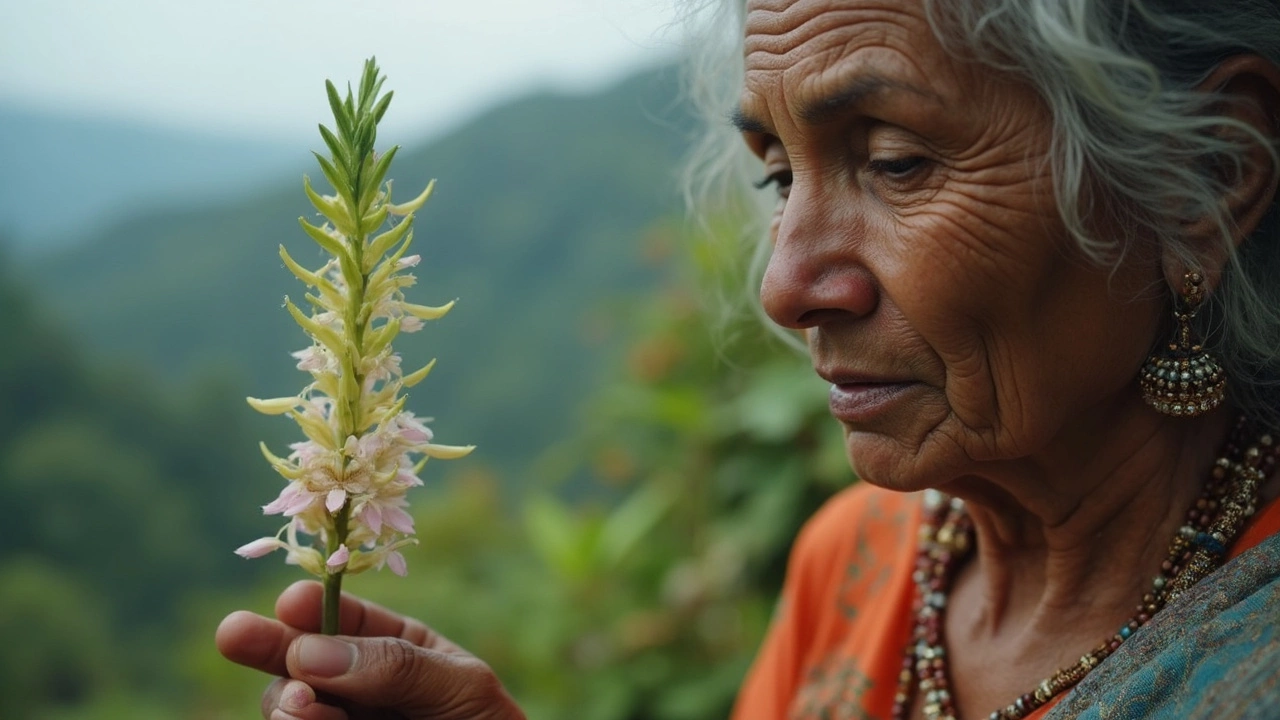
Where and When to See Neelakurinji
If your goal is to catch a glimpse of the rarest flower in India, you’re going to need some patience and planning. Neelakurinji (Strobilanthes kunthiana) famously blooms only once every twelve years, and mainly on the rolling slopes of the Western Ghats. The hotspots? Munnar in Kerala tops the list, but you’ll also find these wildflowers in Kodaikanal and the Nilgiri hills in Tamil Nadu.
The last peak bloom was in 2018, and the next is expected around 2030. Usually, the Neelakurinji flowers between August and October, but the exact timing depends on the rainfall and weather. Locals always keep a close watch and share updates as soon as the hillsides start turning blue-purple.
For the best views, people usually head to:
- Munnar (Kerala): Eravikulam National Park is the most popular spot. The park closes during the Nilgiri tahr’s calving season (usually in February-March), but it’s open during Neelakurinji season. Book entry tickets online in advance because crowds get wild.
- Kodaikanal (Tamil Nadu): The scenic upper Palani hills and around Pambar Shola offer good sightings without heavy tourist crowds.
- Nilgiri Hills: Spots near Ooty and Mukurthi National Park can also deliver, but it’s a bit more unpredictable.
Travel tip: If you plan to visit, sort your transport and hotel rooms months ahead, especially if you’re eyeing Munnar. The bloom draws massive crowds—think of it as the floral Super Bowl.
Bring a decent camera, solid shoes for trekking, and always check local news or social media for flower updates before you go. Even if you miss the “perfect” window, late bloomers are sometimes spotted a month after the main wave.
Why Is Neelakurinji So Rare?
So, what’s the real reason people call Neelakurinji a miracle of nature? For starters, this flower only blooms once every twelve years. It’s not an exaggeration. If you miss it, you’re basically locked out until the next cycle. Scientists call this unique rhythm 'gregarious flowering.' It means almost every plant of this species in an area flowers all at once, then nothing for more than a decade.
Neelakurinji is found mostly in parts of the Western Ghats, especially around Munnar in Kerala and Kodaikanal in Tamil Nadu. It’s super picky about where it grows. It likes rocky hill slopes about 1,300 to 2,400 meters above sea level, so you can’t just walk into any forest and expect to spot it.
This plant’s lifestyle leaves it exposed. Because the seeds take so long to turn into plants, and then bloom only briefly, all it takes is one bad fire, landslide, or a wave of grazing animals to wipe out a whole patch. Plus, a lot of Neelakurinji habitat is being lost to agriculture, tourism projects, and road construction.
Here’s what stacks the odds against the rarest flower in India:
- Extremely rare flowering cycle—once every 12 years
- Needs a specific altitude and cool misty climate
- Grows only in undisturbed shola grasslands
- Vulnerable to forest fires, grazing, and habitat loss
Some numbers drive the message home. The area once covered by Neelakurinji in the Nilgiris has dropped drastically over the last few decades. Habitat destruction is one of the biggest threats.
| Region | Estimated Area in 1970s (sq. km) | Estimated Area in 2020s (sq. km) |
|---|---|---|
| Munnar (Kerala) | 150 | 45 |
| Kodaikanal (Tamil Nadu) | 60 | 20 |
One thing’s clear: the fewer natural grasslands left, the less likely you’ll ever see Neelakurinji outside of photos. Want to help? Support local conservation! People planting trees or creating wildlife corridors are doing more for this flower than any Instagrammer on the scene.
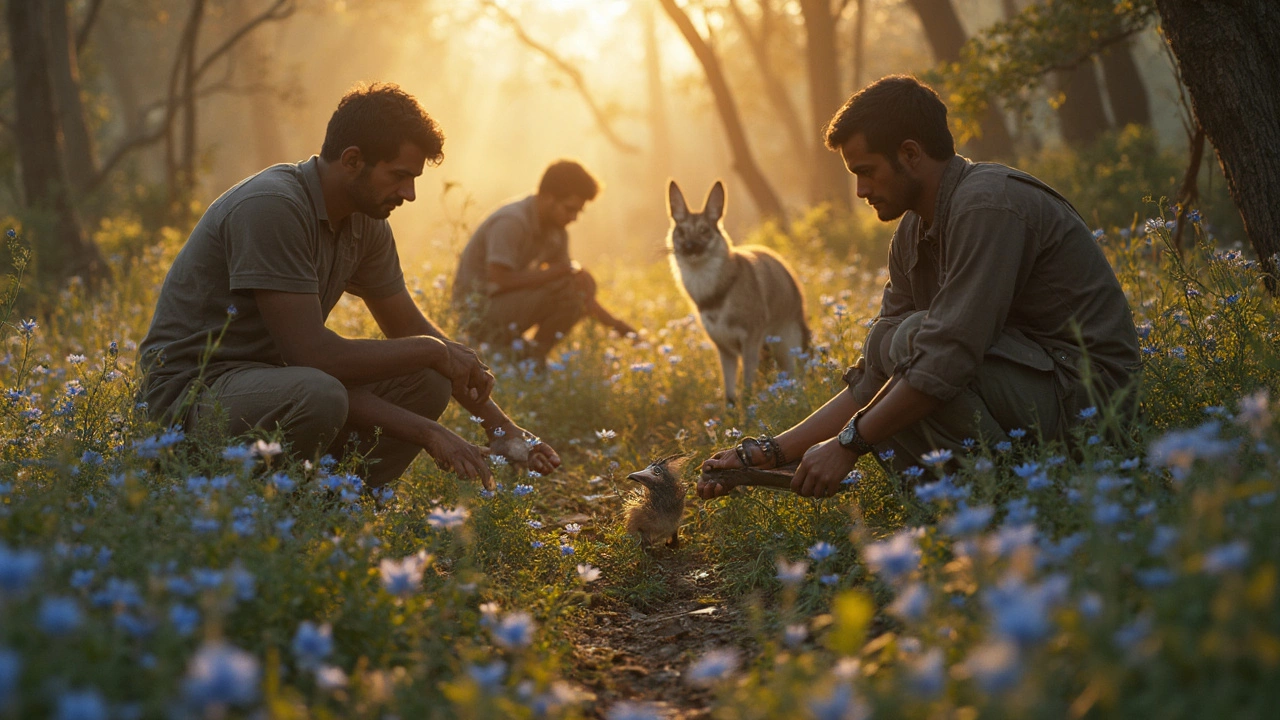
Can You Grow Neelakurinji in Your Garden?
Every time the rarest flower in India blooms, a bunch of garden lovers start thinking, “Could I get this thing to flower at home?” The honest answer: it’s pretty tough for most of us. Neelakurinji isn’t your usual potted plant. It’s an outdoor, wild type that’s picky about where it grows.
Neelakurinji belongs to the Strobilanthes genus and mainly flourishes on the misty hills of the Western Ghats, especially in Kerala and Tamil Nadu. It needs rocky, acidic soil, lots of rainfall, and mild, cool temps—basically what you’ll find at 1300 to 2400 meters above sea level. Your regular balcony planter (even the fancy ones) just won’t cut it.
Plus, even if you somehow pull off the right setup, patience is a must. Neelakurinji only blooms once every 12 years. You're in it for the very long haul. Imagine waiting more than a decade for flowers!
Here’s what you’d need if you’re still tempted:
- Access to seeds or saplings (which are protected and nearly impossible to get legally outside their original habitat)
- An environment that matches the Western Ghats: altitude, regular monsoon-like rainfall, and rocky acidic soil
- No frost or harsh winters—this plant doesn’t handle cold snaps at all
- A lot of patience for the 12-year blooming cycle
It’s not just about the tough conditions, though. Neelakurinji is protected by law because of its rarity and the risk from poaching. Getting seeds or plants is restricted—even scientists usually need special permission just to study them. So, most folks are better off planning a trip when the bloom is expected than trying to grow it at home.
| Factor | Required Condition |
|---|---|
| Altitude | 1300–2400 meters |
| Soil | Rocky, acidic |
| Rainfall | Heavy, monsoon-type |
| Temperature | Cool, no frost |
| Bloom Cycle | Once every 12 years |
| Legal Status | Protected (restricted collection) |
In short, the hassle, the legal side, and the long wait make Neelakurinji a wildflower best enjoyed in the wild—not in a pot by the window. Still, if you love rare flowers, plan a trip to the Western Ghats during its next mass bloom in 2030. It’s worth the wait.
